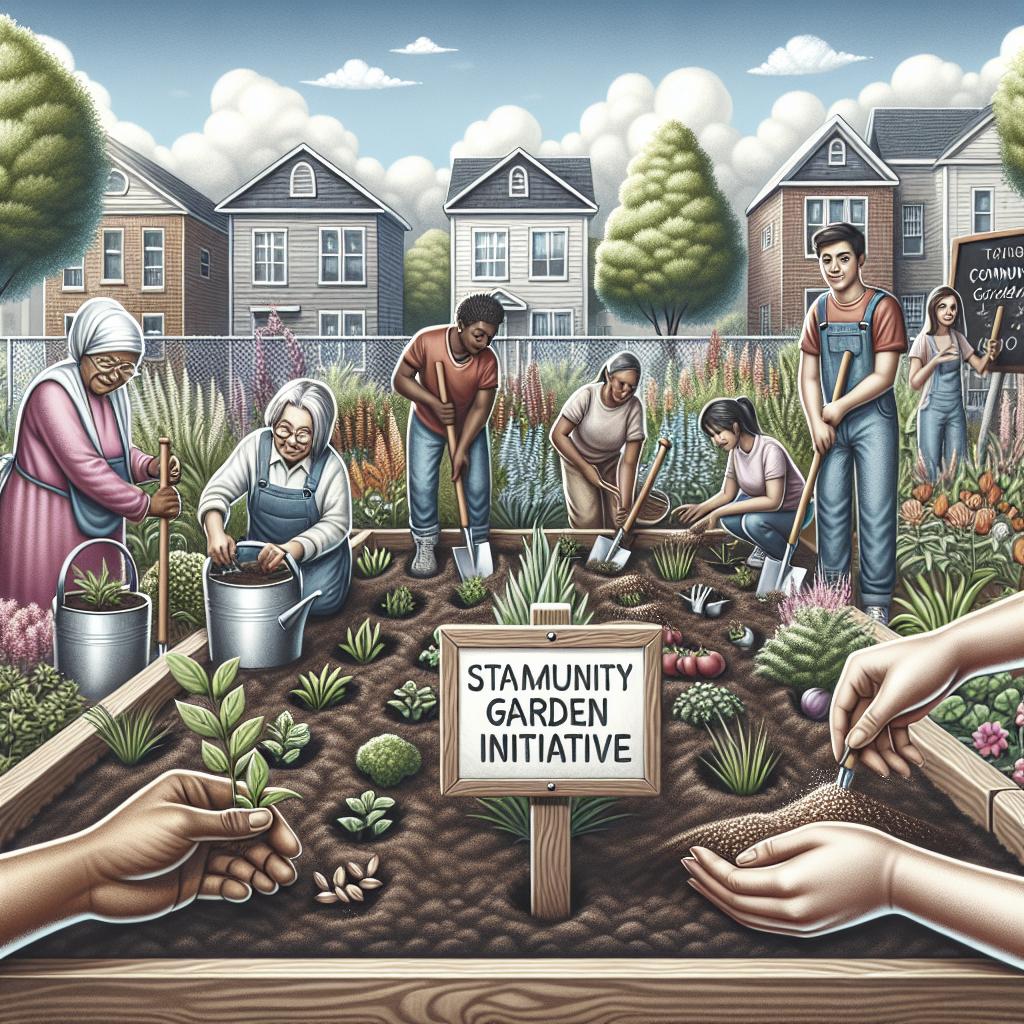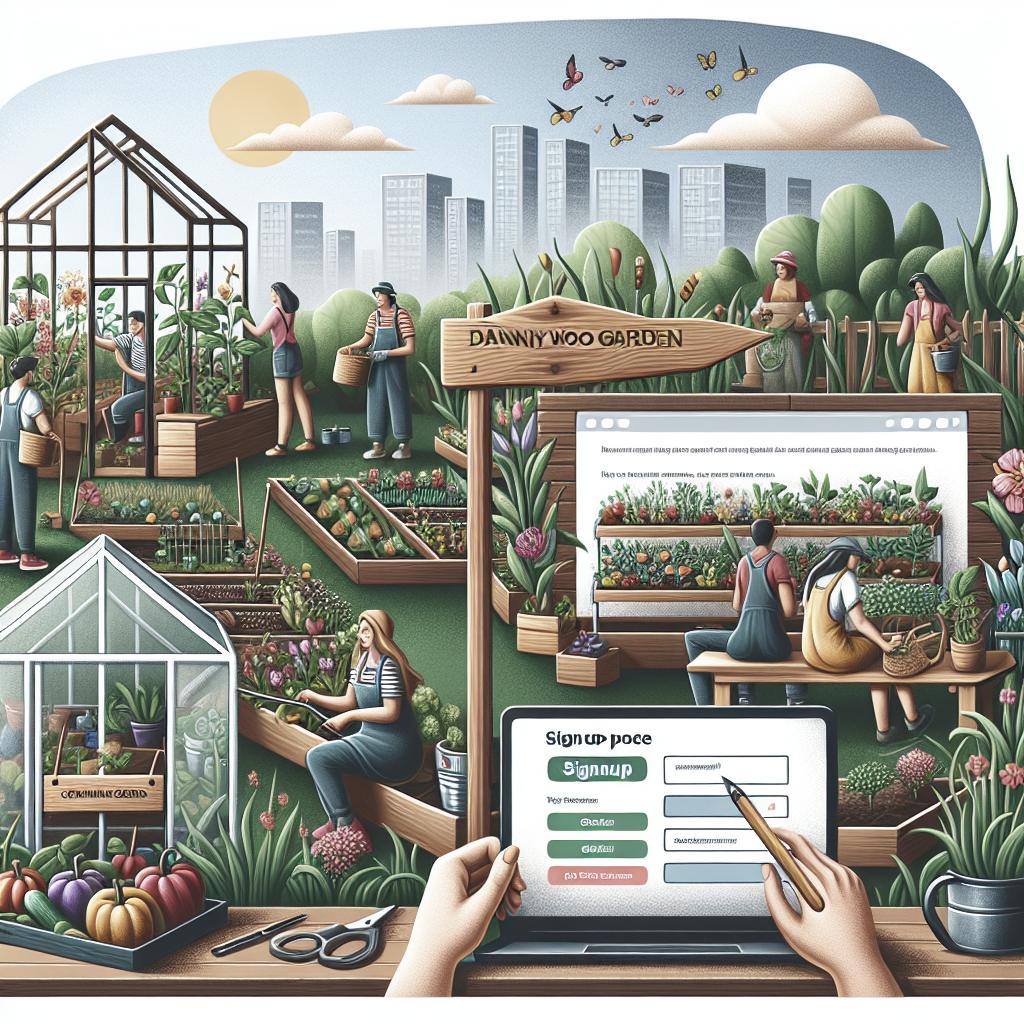Starting a community garden is a deeply rewarding initiative that brings together people, promotes sustainable living, and transforms underused spaces into lush, vibrant sanctuaries. Beyond the fresh produce and aesthetic benefits, community gardens foster a sense of community, reduce stress, and contribute positively to the environment. However, creating a successful community garden requires careful planning, community engagement, and a good grasp of legal and logistical considerations. This post will guide you through understanding the challenges, ensuring legal compliance, selecting the right location, rallying community support, developing a viable business model, creating effective outreach, leveraging technology for management, and designing your garden using Desygner.
Understanding the Challenges Ahead
Starting a community garden is a complex task that involves more than just planting seeds in the ground. One of the primary challenges is ensuring consistent participation and labor. Initially, everyone may be enthusiastic, but maintaining long-term interest can be difficult. Attend community meetings to understand the needs and expectations, and establish a core group of dedicated gardeners to provide continuity. Financial challenges are another significant hurdle. Initial costs for soil, seeds, fencing, and tools can add up quickly. To address this, create a budget plan and consider fundraising activities. Grants and donations from local businesses can also help alleviate financial stress. Being transparent about your financial needs and constraints can foster trust and garner more community support.
The Importance of Legal Compliance
Legal compliance is crucial to avoid potential conflicts and ensure the garden’s long-term sustainability. Start by researching local zoning laws and regulations. Each municipality has its own set of requirements, and understanding these can prevent legal hassles down the line. Contact your local planning department to get detailed information and ensure your garden site is compliant. Insurance is another legal consideration. Community gardens often require liability insurance to protect against accidents and injuries. Discuss with legal advisors to understand the specific coverage needed for your garden. Additionally, drafting a set of garden rules and agreements can help manage expectations and responsibilities, thus minimizing conflicts among participants.
Finding the Right Location
Selecting the perfect location is pivotal for the success of your community garden. Accessibility is key; choose a site that is easily reachable for the majority of your community members. It’s also important to ensure the site gets ample sunlight — ideally 6 to 8 hours a day — which is essential for most plants to thrive. Soil quality is another critical factor. Preferably, opt for land that has not been contaminated with chemicals or heavy metals. Conduct soil tests to determine its pH levels and nutrient content. If contaminants are present, consider raised beds with imported soil. Proximity to a water source is equally important; setting up an efficient irrigation system will save time and effort.
Gathering Community Support
Community support is the backbone of any successful community garden. Start by hosting informational meetings to explain your vision and the benefits of the garden. Use these meetings to gather feedback and understand what crops or features are most important to your community. Building partnerships with local schools, businesses, and non-profits can provide essential resources and increase support. Schools can integrate garden activities into their curriculum, businesses can offer sponsorship, and non-profits might provide volunteer labor. Engage actively with local media to get the word out and attract more participants.
Crafting Your Business Model
While a community garden might be a non-profit venture, it still requires a solid business model to be sustainable. Define clear objectives for your garden, whether it’s to provide fresh produce, offer educational opportunities, or enhance community engagement. Identify potential revenue streams such as membership fees, vegetable sales, workshops, and grants. Financial planning should include both initial setup costs and ongoing maintenance expenses. Create a detailed budget that accounts for tools, seeds, water, and other essentials. Maintain an emergency fund to address unexpected expenses. Transparent financial records will help in building trust and ensuring accountability.
Developing an Effective Outreach Program
Effective outreach ensures that your community garden garners the attention and involvement it needs to thrive. Leverage social media platforms such as Facebook, Instagram, and Twitter to share progress updates and upcoming events. Create a dedicated website or blog where people can subscribe to newsletters for regular updates. Organize community events like open houses, workshops, and planting days to attract and engage potential gardeners. Collaborating with local schools, libraries, and other community organizations can also amplify your outreach efforts. The goal is to create a sense of ownership and enthusiasm among the community members.
Leveraging Technology
Incorporating technology can significantly streamline the management of your community garden. Use apps like Garden Manager to help with task scheduling, planting guides, and maintenance tracking. Digital platforms like Google Sheets or Trello can help in communication and task coordination among garden members. Technology also aids in community engagement. Utilize online surveys and polling tools to gather feedback and make informed decisions. Virtual meetings through Zoom or other conferencing tools can keep everyone on the same page, especially during planning phases or when addressing any emerging issues.
Designing Your Garden with Desygner
A well-designed garden fosters community pride and enhances functionality. Use tools like Desygner to create a detailed site plan. This free, user-friendly design tool allows you to lay out garden beds, pathways, communal areas, and even artistic elements. A well-organized plan makes it easier to phase the project and allocate resources effectively. Involve the community in the design process to ensure it meets everyone’s needs. Conduct workshops where participants can sketch their ideas. Desygner’s collaborative features make it easy to incorporate multiple inputs, ensuring the final design is a collective vision.
Embarking on Your Community Gardens Journey
Starting a community garden is a fulfilling endeavor that requires careful planning, community engagement, and a bit of creativity. By understanding the challenges, staying legally compliant, choosing the right location, gathering community support, crafting a viable business model, developing an effective outreach program, leveraging technology, and designing thoughtfully with tools like Desygner, you can create a thriving community garden that benefits all. Below is a summary table of the steps involved: “`html
| Step | Description |
|---|---|
| Understanding the Challenges Ahead | Acknowledge participation and financial hurdles; establish a dedicated core group and create a budget plan. |
| The Importance of Legal Compliance | Research local laws and zoning regulations; secure liability insurance and draft garden rules. |
| Finding the Right Location | Choose an accessible site with good sunlight, quality soil, and proximity to a water source. |
| Gathering Community Support | Host meetings, build local partnerships, and engage with local media to gather support. |
| Crafting Your Business Model | Define objectives, identify revenue streams, and create a detailed financial plan with transparent records. |
| Developing an Effective Outreach Program | Utilize social media and organize community events to engage and attract participants. |
| Leveraging Technology | Use apps for garden management, online surveys for feedback, and virtual meetings for coordination. |
| Designing Your Garden with Desygner | Create a detailed site plan with community input using Desygner; ensure the design is functional and inclusive. |
“` By following these structured steps, you’ll be well on your way to building a thriving and sustainable community garden that fosters both environmental stewardship and community spirit.


